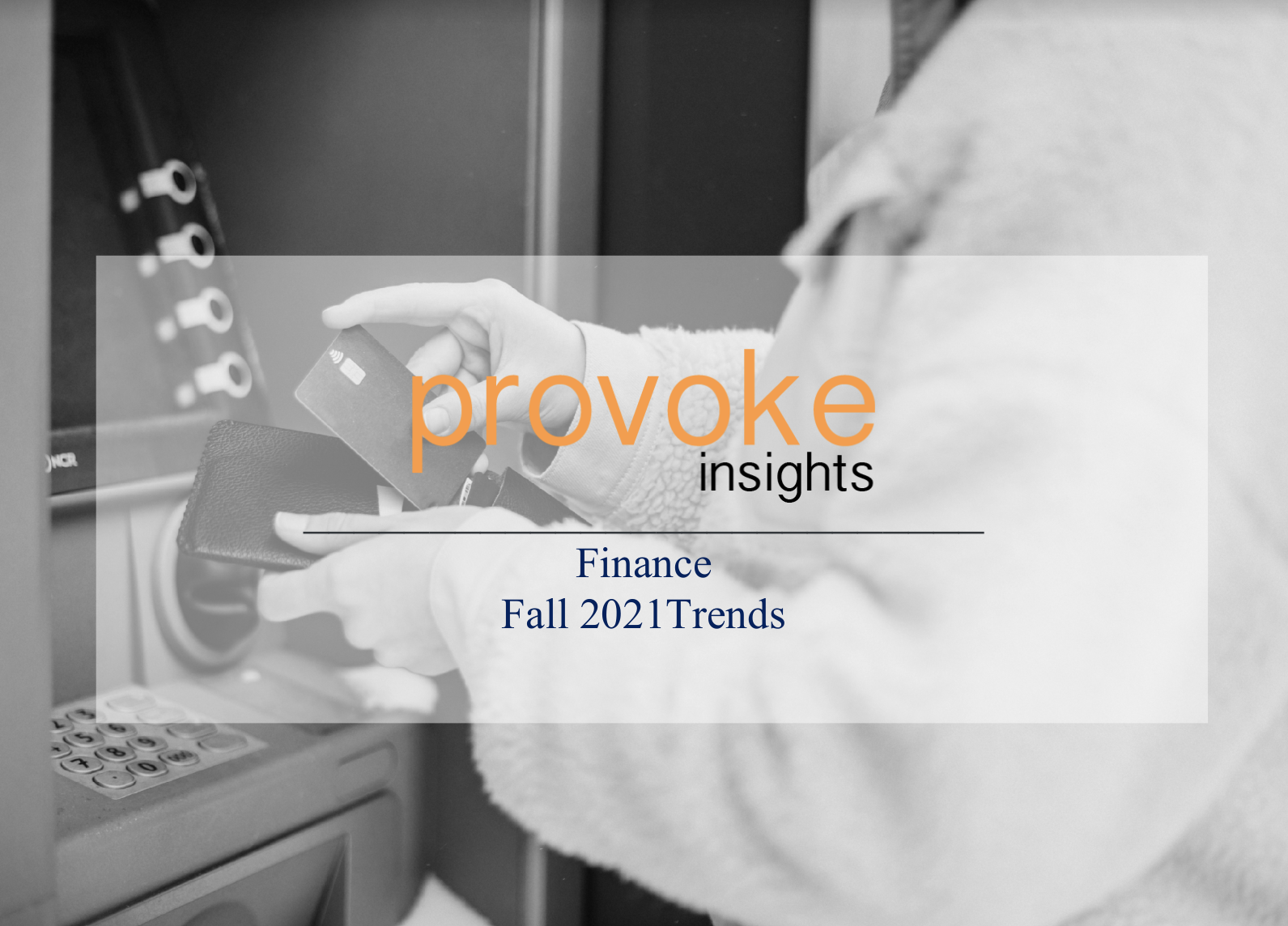Finance Research 2022
There is no doubt that COVID-19 has impacted the economy significantly, as many businesses have struggled with finance, lost money, or had to shut down. But is there still hope in the American economy? Provoke Insights conducted our third wave of in-house trends research, which focuses on discovering market trends and consumer habits in 15 different industries, including finance.
Perceptions of the Economy
Over two-thirds of Americans (70%) are concerned about the economy. However, worry about the economy is down 10% since the beginning of the pandemic. Those who are more likely to be concerned with the pandemic’s economic impact include parents, women, and members of Generation X.
Trust in Financial Institutions
Overall, only a quarter of Americans trust financial institutions. The majority (63%) are neutral, but 9% do not trust them at all. Our data show that the more wealth a person has, the more faith they place in these institutions. Moreover, people with the COVID-19 vaccine place more of their trust in these banks, investment firms, and more.
Who is Investing?
Only one-third of Americans have an investment account, and only one-fifth have traded cryptocurrency. Investors are more likely to be male, have a higher household income, be married, and have children. Furthermore, individuals who invest tend to have an online account, even those with financial advisors.
Are Americans Ready to Retire?
No, they are not! Less than half of Americans have prepared for retirement. Unsurprisingly, people with a higher household income have saved more. Additionally, other groups who tend to have a retirement plan account include those living in the Northeast, Baby Boomers, males, and Republicans.
Download the full report for free here.
Methodology
Provoke Insights conducted a 15-minute online survey in autumn of 2021 among 1,504 Americans between the ages of 21 and 65. Provoke Insights uses a random stratified sample methodology to ensure a high degree of representation among the U.S. population. (This includes household income, age, gender, geography, ethnicity, and children living in the household.) Statistical differences between subgroups were tested at a 95% confidence level. The margin of error is +/-2.5%.












